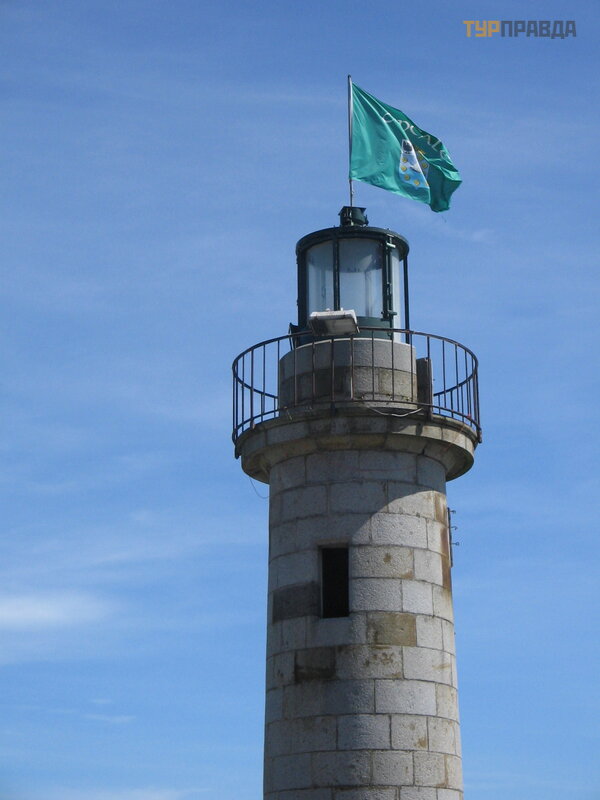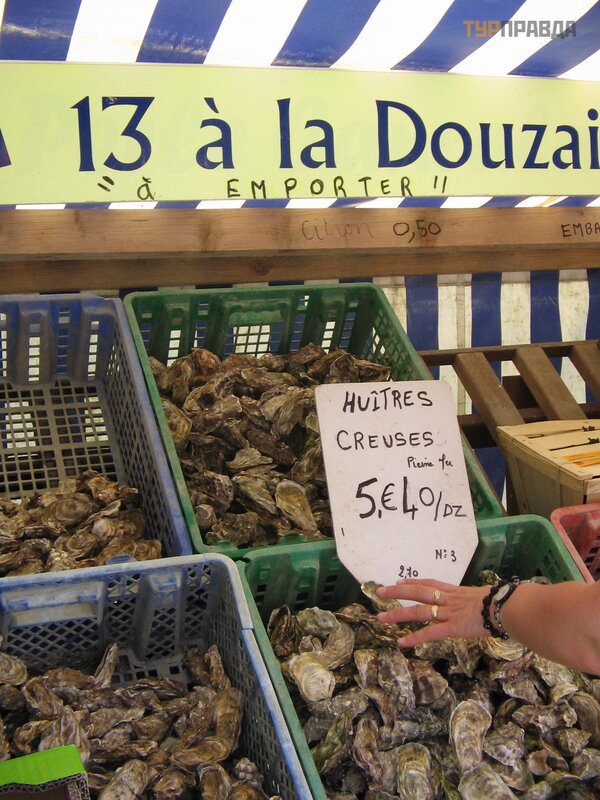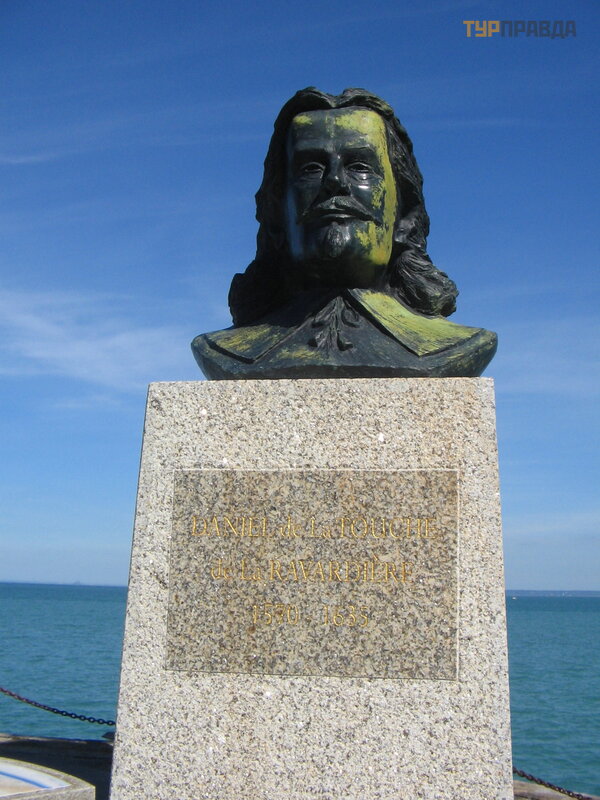OYSTER DONT WANT? (CANCAL)
We cross the border river Couesnon and find ourselves in Brittany. This is where I wanted to go for a long time. The route raised doubts that I would see the Brittany that I imagine. And these doubts began to come true on the first day. The more you dream, the stronger the disappointment.
For those who are interested in the Celts, their traditions, music, dances, perhaps the British Isles are more attractive: everything is brighter there and “for everyone” or something (which is worth one “River Dance” and almost a worldwide Halloween, and Saint Patrick's Day is celebrated everywhere). But I wanted to go to the French Celtic from cartoons about Asterix (not to be confused with feature films with Depardieu-Obelix). These places are associated with an unusual language for me - one of several modern Celtic, folklore festivals in Lorian, where I would not refuse to be, with folk costumes and amazing caps.
On my first visit to France in the late 90s, I bought a cassette of Breton music and listened to it many times. The cassette also contained sailors' songs, and something reminiscent of medieval troubadour songs (remember Chré tien de Troyes). Some in French, and some in a completely different language. She brought and read Breton fairy tales or legends (Perrot was also inspired by stories from Brittany when writing his fairy tales), a book about the Celts by the famous British researcher of these peoples Barry Cunlifa. Arthur, Merlin, Morgana, Viviana - all from here. Land of legends, legends and fairy tales. Mysterious Brittany.
From Mont Saint-Michel we went to eat oysters in Cancale. We are in Cancale - nothing has changed. The same French, no black flags, inscriptions in another language.
I have never eaten oysters, I had no desire to do so (the raw food diet is not mine).
She sat on the shell-strewn embankment among the oyster eaters, looking out over the bay. The guide persuaded me to try at least one. I tried it and didn't get any satisfaction. I was struck by the fact that these sea creatures grow not for one season, as I thought, but for 3-4 years, and those that are larger - even more (15 years), and eat them in minutes. And that so many lovers have it all in huge quantities. In general, I regretted that it was not possible to spend this time in the abbey of Mont Saint-Michel.
Cancale is an ancient place, with a name similar to the modern one, that has been mentioned since the 11th century. The first part of the name probably comes from the Breton "port, shelter, shell" (the latter is quite consistent with the modern specialization of the settlement in the production and sale of oysters), the second - from the Breton "river" (it flows on the outskirts).
But there is a text that tells of a Cornish monk (Saint Meen), who even earlier (in the 6th century) landed in the bay of Saint-Michel near Cancale to found a settlement. He was an associate of Saint Samson (one of the seven revered saints of Brittany). He founded monasteries. In general, in religious Brittany, you can count a couple of dozen churches and chapels dedicated to him, including somewhere here in Cancale. Later, Francis I granted the settlement the status of a city for the good quality of the oysters supplied to the royal table.
Since ancient times, sailors from Cancale have been involved in cod fishing off the coast of Novaya Zemlya, building ships. The last shipyard closed at the beginning of the 20th century. For wild oysters (so as not to deplete their stocks), the fishermen went according to the order established by Louis XVI: on Easter days, at the signal of the cannon, ships went for two weeks to fish; It was called "caravan".
Then the loaded ships would return, the women sorting through the oysters at low tide. The largest ones were called "horse hooves".
In the 17th century, the ships of D. La Toucha left from here to the shores of Brazil. He became the founder of the city of San Luis (in honor of Louis XIII). The Portuguese drove the French out of these territories for quite a long time. A monument to him was recently erected on the embankment.
In the town you can visit the sea farm (oyster museum), the museum of folk traditions (in the Saint-Meen church).






